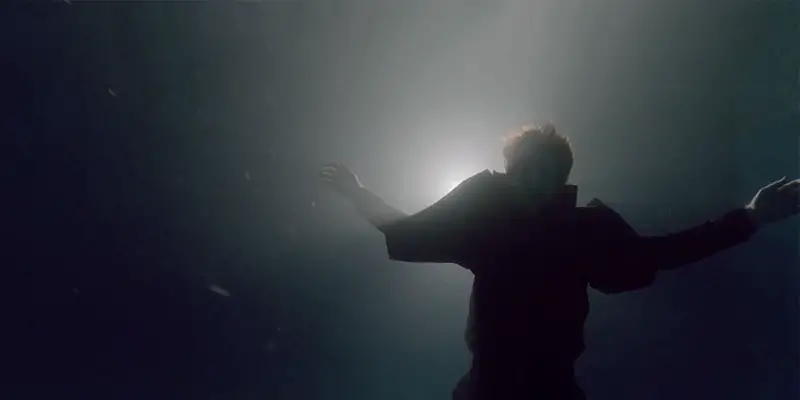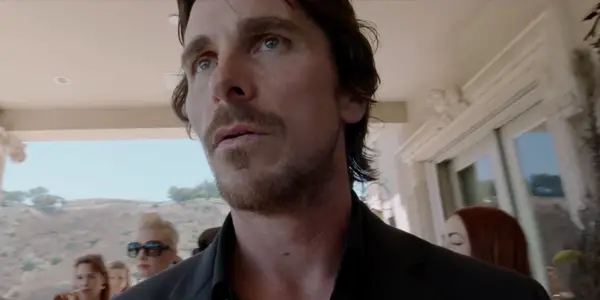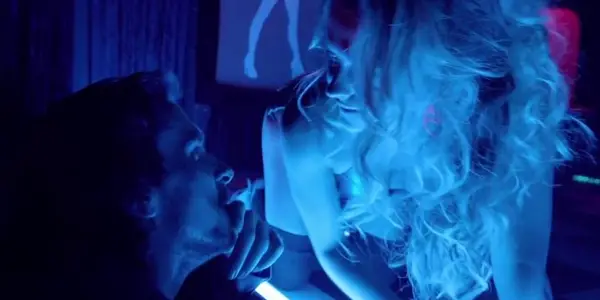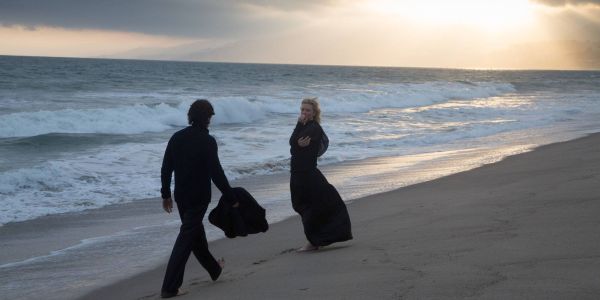KNIGHT OF CUPS: Look, But Don’t Touch

Alex is a 28 year-old West Australian who has a…
Knight of Cups is the first film I’ve ever seen where over a third of the audience left the theatre during the film. Without any context, I understand why this film would drive people to leave the movie. The film is an artistic montage, never stopping to deliver any linear narrative or dialogue scenes, continuing its visual poetry.
The frequent juxtaposition of modern excess and the primitive essence of nature is a frequent device well known in Terrence Malick’s filmography, from his origins in Badlands to his latest pseudo-environmental trilogy, which began with The Tree of Life, then To The Wonder, and seemingly closing off with Knight of Cups. 42 years after his first feature, it is his most experimental yet.
Using a mix of slow motion, montage, celebrity cameos, split screen and more, Malick examines modern day superficiality and the continuing quest for meaning in a flawed yet well-crafted film.
Malick Meets Fellini
Knight of Cups follows Rick (Christian Bale), a depressed Hollywood screenwriter, who in between a myriad of different women attempts to find meaning in his life. The film is a modernist riff on Federic Fellini’s 8 ½, with a dash of Alejandro Jodorwosky’s spiritual symbolism to pilot it.
His journey begins after another day of forgetful partying, where Rick is awoken by a huge earthquake which rocks his home, establishing Malick’s theme of man’s co-existence with nature. Even the power of an earthquake does not shake Rick from his funk, as he jumps between various Hollywood studios, celebrity filled parties, a psychic, the beach and trying to connect with his dying father in the journey for existential meaning.
The film forgoes a proper linear narrative in favour of episodic chapters (named after different tarot cards, such as High Priestess, etc.) as Rick goes to different people, each examining a different aspect of his life and personality. From his ageing father, an ex-wife, different models, his angry younger brother and different Hollywood figures, Rick continuously fails to find a new meaning in his life.
The film asks the question; in life, if we manage to be successful and accomplish our dreams, what then? How can one find happiness when the passion driving us leaves? Malick of course never answers the question, but provides a lot of material for the viewer to debate this with.

The continuously rotating cast is quite impressive. Shot over three years, Bale appears in practically every scene, always with a celebrity counter-part. This is a hard film to judge on its acting, as the film is improvised, with most actors given roughly ten minutes in the film (or some barely one line), but no one sticks out as performing poorly.
The most impressive acting in the film comes from veteran Brian Dennehy, who is one of the only recurring characters. As Rick’s father, he acts as a vision of what Rick’s life will become: alone and regretful. Dennehy plays the older passionate man well, channeling his well-known ability to really antagonize those around him, and he becomes the only character in the film that can really get anything out of Rick.
Wes Bentley does a great job as well as Barry, Rick’s younger brother, a reflection of Rick’s younger passionate self, who, when not cruising the streets of LA, is constantly fighting with his father. Cate Blanchett, Freida Pinto, Natalie Portman, Imogen Poots and Teresa Palmer play the various women that Rick gets involved with, all quickly disappearing from the film after their ten minutes, which gives the film an annoying repetitive feeling after the halfway point.
A Very Pretty Picture
Emmanuel Lubezki’s cinematography really services the film’s meandering pace, with the constantly shifting visuals guiding the film’s poetic tone. It gives the audience something to latch on to due to the lack of narrative drive. Lubezki is one of the hottest cinematographers at the moment due to his back-to-back cinematography Oscar wins for Gravity and Birdman.
The film’s flashes of visual brilliance mixed in with the different experimental techniques that Malick is testing out really shine when he goes back to his cinematic pillar – nature photography, but this time he is trying to make a slightly different point. The nature depictions, rich with fine details and colour, are frequently juxtaposed with the depleted, modernistic landscapes of Hollywood, spent of any form of energy, reflecting Rick’s sudden state. Signs of Lubezki’s style are recognisable, with the constantly moving camera and hand-held style managing to keep the film’s pace from faltering at any time.

This brings up the film’s big problem: its overall inability to engage with its audience. For a movie about a character’s personal spiritual journey, Malick never allows the audience into the character’s thoughts, only showing us Rick’s actions, which gives the feeling of keeping the viewer excluded from any form of personal engagement with his plight. It never feels like Rick is transforming or changing as the film goes on, with his mopey frown and constant slump. He does not change by the end, so a part of myself wants to question why we are watching Rick. Why should we care?
Characters around Rick constantly question his changed demeanour, but that brings up another reason for the film’s exclusionary feeling. Most of the film’s scenes never stop for dialogue exchanges, but when they do, characters usually spout philosophy, metaphorical diatribes or vague business talk, which makes none of the characters feel human because none of them communicate as such.
Each character ends up feeling like a plot element, a symbolisation to explore a certain aspect of Rick’s life rather than a fully-formed person appearing on-screen. The film’s ongoing voice-over, delivered by Ben Kingsley, who reads out different philosophy lines, really highlights the film’s themes in an overt fashion.

This is probably the most niche film of the year, which manages to even feel exclusionary to the arthouse audience that it’s directed towards. The attraction of popular celebrities will really exasperate any mainstream audience members that attempt to watch the film or who are unaware of Terrence Malick, as they will be completely lost after the opening act. This could result in their immediate walkout, as I witnessed firsthand during my screening.
I am not placing myself in a position of entitlement to say that arthouse is ‘smarter’ or of my being able to understand this artistic cinema, it’s just a testament to how experimental the film is and the lack of empathy that it encompasses.
Conclusion
Upon reflection, Knight of Cups is better as a memory and something to dissect rather than a piece of entertainment. When watching the film, it’s quite meandering and plodding, with the film’s lack of narrative drive and constantly shifting characters making its 100-minute runtime really drag. Yet, Lubezki’s alluring visuals are quite fascinating to watch and Malick’s knack of weaving nature photography and modern-day semantics makes the film a decent entry into his filmography.
But the coldness of the film also really makes its central appeal not quite work. Trying to build a sympathetic character going through a personal spiritual crisis doesn’t quite work when Malick doesn’t allow his target audience any way of having an emotional attachment to any of it. It makes the whole film feel redundant, as even the allure of different celebrity cameos wears off after a while as they become increasingly disposable, given too brief a time to make any real impact on the character and the audience.
In the middle of the film, Malick interrupts the action to show us slow motion footage of dogs attempting to catch a tennis ball underwater, but constantly missing. The slow-motion footage is the film’s theme wrapped up in an obvious visual metaphor, constantly reaching for the goal but never obtaining it. To get meta, it’s also a reflection on the film itself: trying to make a point but constantly failing.
It’s nice to see something slightly different from Malick, but experimentation aside, it feels quite safe for the veteran film-maker. Hopefully one of his many upcoming untitled films brings that spark back.
Are you a fan of Terrence Malick’s latest row of films?
Does content like this matter to you?
Become a Member and support film journalism. Unlock access to all of Film Inquiry`s great articles. Join a community of like-minded readers who are passionate about cinema - get access to our private members Network, give back to independent filmmakers, and more.













